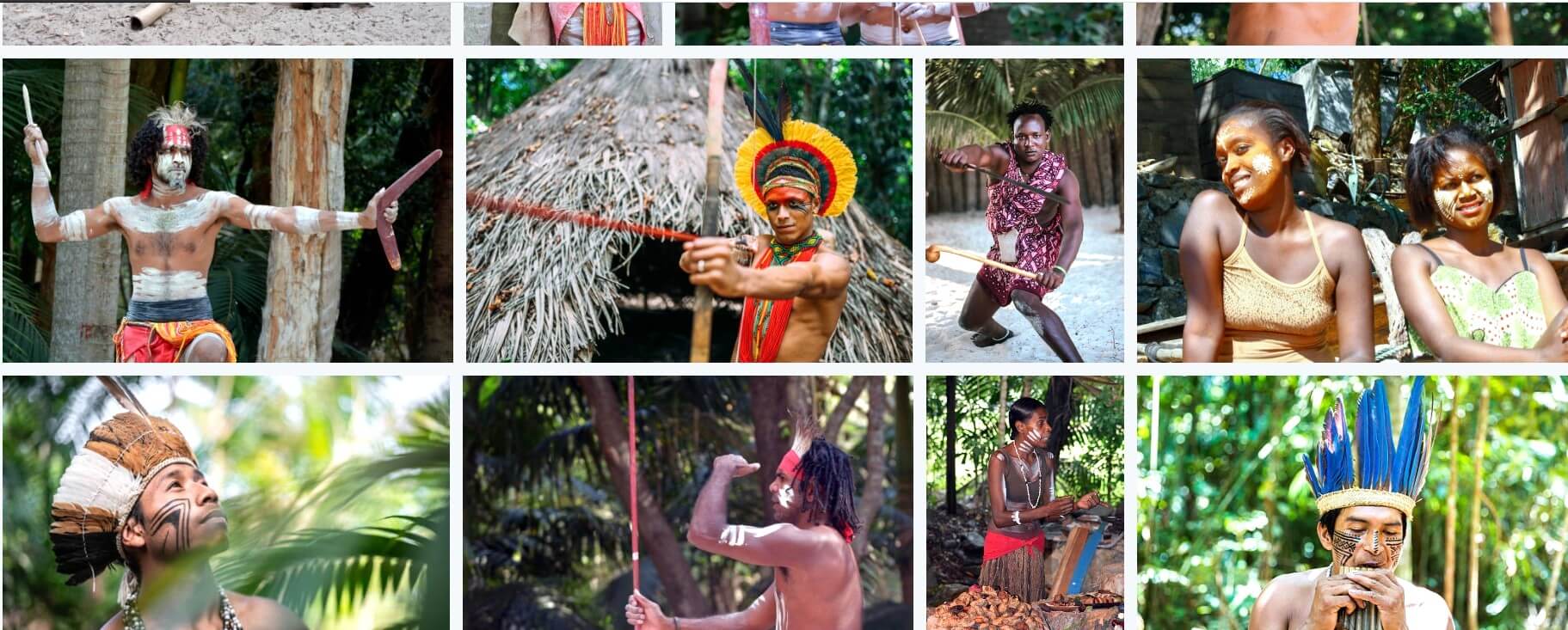Aboriginal Tribe (Australia) Culture Clothing Location Facts : The Aboriginal tribes of Australia possess a rich and ancient culture, deeply rooted in their unique connection to the land and spirituality. Their diverse customs, languages, and artforms reflect thousands of years of history and traditions. Traditional Aboriginal clothing often includes possum-skin cloaks and kangaroo skin garments, crafted with intricate designs. Spread across the vast Australian continent, these indigenous communities continue to preserve their cultural heritage while navigating modern challenges.
Aboriginal Tribe (Australia) Culture Clothing Location Facts

Aboriginal Tribe (Australia) Culture Clothing Location Facts
Aboriginal Tribe (Australia) Culture
The Aboriginal tribes of Australia boast a diverse and intricate culture that spans over 60,000 years. Their deep spiritual connection to the land, known as “Country,” forms the foundation of their cultural practices. These include intricate storytelling through art, dance, and music, passed down through generations. Aboriginal customs, languages, and ceremonies reflect their rich heritage, emphasizing community, kinship, and respect for the natural world. Despite the challenges of colonization, Aboriginal people actively strive to preserve and revitalize their cultural traditions in the modern era.
Aboriginal Tribe (Australia) Clothing
Traditional Aboriginal clothing varies among different tribes, each influenced by their specific environments and climates. Common garments include possum-skin cloaks, kangaroo skin loincloths, and woven dilly bags for carrying belongings. Intricate patterns and designs, often inspired by Dreamtime stories, adorn their clothing, symbolizing cultural identity and spiritual connections. In modern times, Aboriginal people may wear a mix of traditional and Western clothing, while still valuing the significance of their ancestral attire as an essential aspect of their cultural heritage.
Aboriginal Tribe (Australia) Location
The Aboriginal tribes of Australia have inhabited the continent for tens of thousands of years, making it their ancestral homeland. They occupy various regions, including the vast deserts, rainforests, coastal areas, and islands. Each tribe’s location is intricately tied to their cultural practices and spiritual beliefs, as they share a profound connection with their land, known as “Country.” Despite facing challenges, Aboriginal people maintain their ancient ties to the land, preserving their heritage and traditional way of life.
Interesting Facts About Aboriginal Tribe (Australia)
- The Aboriginal tribes of Australia have one of the oldest continuous cultures on Earth, dating back over 60,000 years.
- There are over 500 distinct Aboriginal tribes, each with its own language, customs, and traditions.
- Aboriginal people have a deep spiritual connection with the land, believing in the Dreamtime, a period when ancestral beings shaped the world.
- Indigenous rock art, some dating back thousands of years, can be found throughout Australia, offering insights into their ancient culture.
- The Aboriginal flag, designed by Harold Thomas in 1971, represents the unity and identity of Aboriginal people.
- Aboriginal kinship systems are intricate and guide social relationships within their communities.
- The didgeridoo, a wind instrument, is an essential part of Aboriginal music and ceremonies.
- Aboriginal art often features intricate dot paintings and vibrant colors, each carrying specific meanings and stories.
- The stolen generation refers to the forced removal of Aboriginal children from their families by the Australian government until the 1970s.
- Aboriginal people have diverse hunting and gathering practices, utilizing traditional knowledge to find food and medicinal plants.
- Traditional Aboriginal houses include bark shelters, dome-shaped huts, and desert windbreaks, each suited to their respective regions.
- Aboriginal people use songlines, known as “Dreaming tracks,” to navigate vast landscapes and remember important cultural knowledge.
- The Torres Strait Islanders, located in the Torres Strait Islands between Australia and Papua New Guinea, are a distinct Indigenous group with their own unique culture.
- Aboriginal people are skilled in “firestick farming,” using controlled burns to manage the land and promote biodiversity.
- Traditional Aboriginal ceremonies, such as corroborees and initiation rites, play significant roles in passing down cultural knowledge and spirituality.
- Aboriginal women are the custodians of Dreamtime stories and knowledge in some tribes.
- The Yidaki, also known as the didgeridoo, is considered a sacred instrument and is often played during ceremonies.
- Aboriginal people have a vast knowledge of bush medicines, using various plants for healing purposes.
- The 1967 referendum granted Aboriginal people citizenship rights and enabled the government to create specific policies to address their needs.
- The Aboriginal and Torres Strait Islander peoples’ history is recognized with a National Sorry Day in Australia, commemorating the Stolen Generations and promoting reconciliation efforts.
